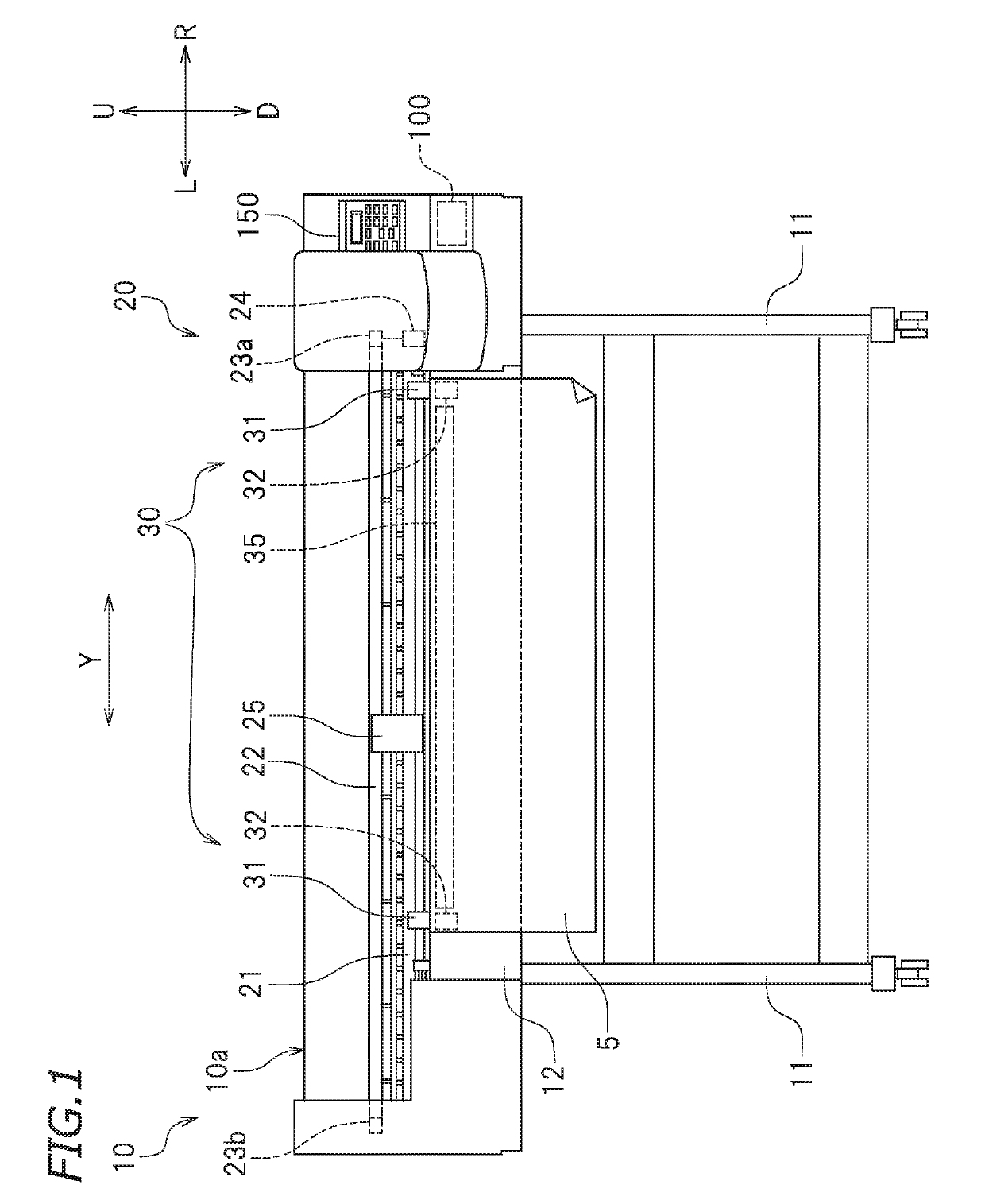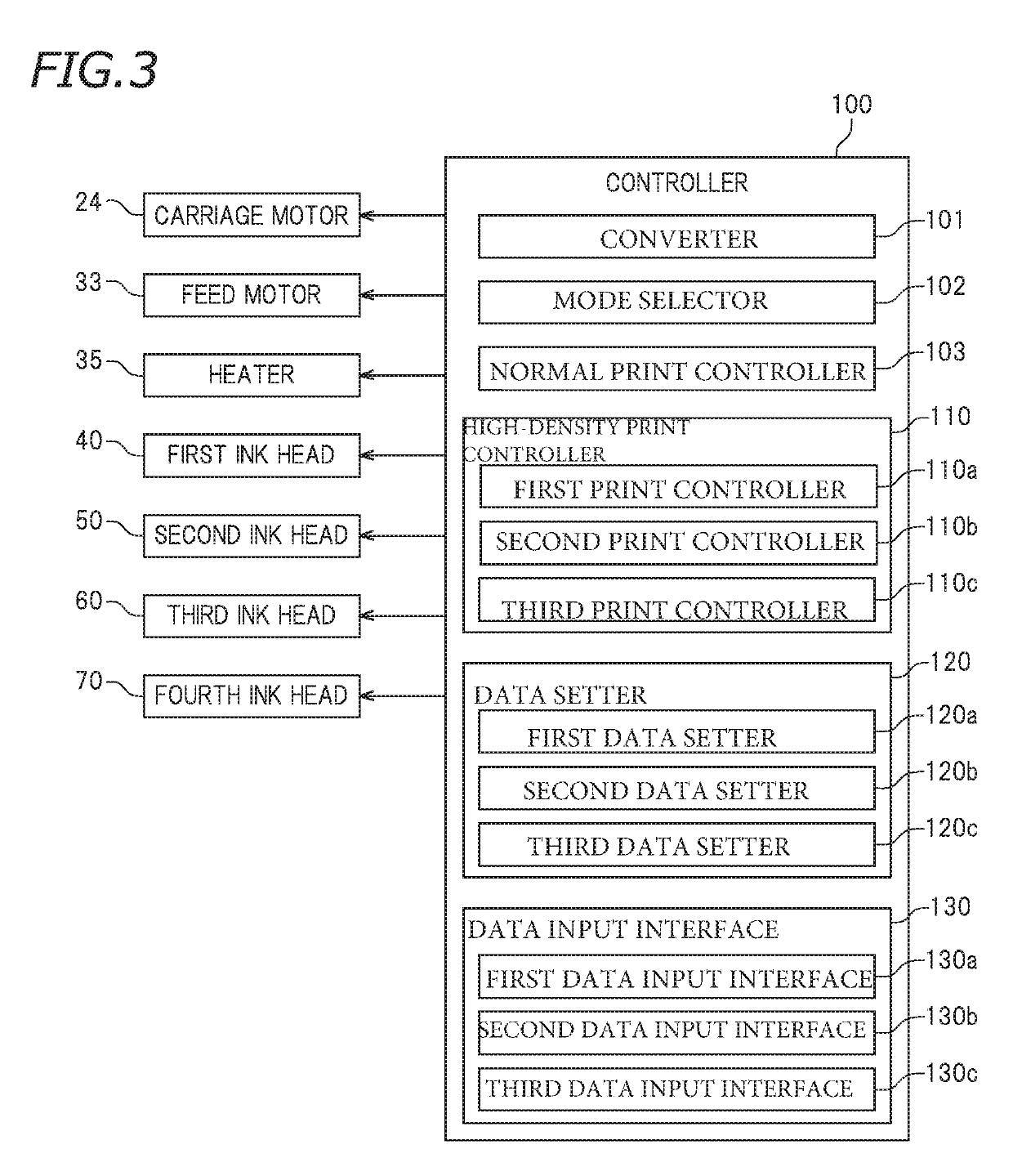Inkjet printer
a printer and inkjet technology, applied in the field of inkjet printers, can solve the problems of insufficient drying and fixing of ink, more problems associated with printing and printing ink, and the amount of ink to be landed on the recording medium is greater, so as to achieve high density printing, less ink feathering, and high-quality images
- Summary
- Abstract
- Description
- Claims
- Application Information
AI Technical Summary
Benefits of technology
Problems solved by technology
Method used
Image
Examples
first preferred embodiment
[0023]FIG. 1 is a front view of a large-format inkjet printer (hereinafter simply “printer”) 10 according to a first preferred embodiment of the present invention. The printer 10 prints images on a recording medium 5 by consecutively moving a recording medium 5 in a roll form frontward (i.e., toward downstream X2 along the sub-scanning direction X) and ejecting ink from a first ink head 40, a second ink head 50, a third ink head 60, and fourth ink head 70 (all of which are shown in FIG. 2), which are mounted on a carriage 25 that moves along the main scanning direction Y. Insofar as the printer 10 herein is concerned, the directional term “downstream X2” means “frontward”, and the directional term “upstream X1” means “rearward”, as appropriate.
[0024]The recording medium 5 is an object on which images are to be printed. The recording medium 5 is not limited to a particular material. The recording medium 5 may be paper, such as plain paper or inkjet printing paper. The recording mediu...
second preferred embodiment
[0065]A second preferred embodiment of the present invention allows the operator to specify the number of nozzle arrays allocated per ink head through an operation on the operation panel screen. In other words, a printer 10 according to the second preferred embodiment does not have a fixed number of nozzle arrays, and the operator sets the number of nozzle arrays and the print coverage for each of the nozzle arrays each time. In the second preferred embodiment, preferably at most five nozzle arrays are able to be set per each one ink head. It should be noted that the number, at most five, is merely illustrative, and the number of the nozzle arrays that can be set per one ink head is not limited to five. Note that the printer 10 according to the second preferred embodiment is preferably the same as that according to the first preferred embodiment, except for the just-described configuration. In the following description of the second preferred embodiment, the same elements as in the ...
third preferred embodiment
[0072]A third preferred embodiment of the present invention allows an independent print coverage to be set for each of a plurality of ink heads. A printer 10 according to the present preferred embodiment allows each one of the ink heads to have a first print coverage to an m-th print coverage independent of the print coverages of the other ones of the ink heads.
[0073]FIG. 10 is a block diagram illustrating the controller 100 according to the present preferred embodiment. The high-density printing performed by the printer 10 according to the present preferred embodiment is three-layer overprinting, as in the first preferred embodiment. A high-density print controller 110 according to the present preferred embodiment is configured or programmed to include a first head print controller 111, a second head print controller 112, a third head print controller 113, and a fourth head print controller 114. Each of the first to the fourth head print controllers 111 to 114 includes a first prin...
PUM
 Login to View More
Login to View More Abstract
Description
Claims
Application Information
 Login to View More
Login to View More - R&D
- Intellectual Property
- Life Sciences
- Materials
- Tech Scout
- Unparalleled Data Quality
- Higher Quality Content
- 60% Fewer Hallucinations
Browse by: Latest US Patents, China's latest patents, Technical Efficacy Thesaurus, Application Domain, Technology Topic, Popular Technical Reports.
© 2025 PatSnap. All rights reserved.Legal|Privacy policy|Modern Slavery Act Transparency Statement|Sitemap|About US| Contact US: help@patsnap.com



